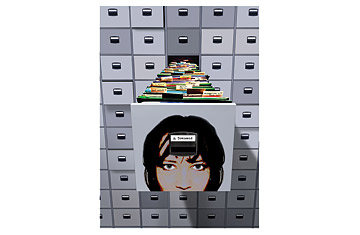
Facebook is rolling out the personal digital archive Timeline to replace its aging profiles
At Facebook's F8 developers Conference in San Francisco last September, CEO Mark Zuckerberg introduced the site's new page motif, Timeline. F8 has played host to most of Facebook's biggest announcements--new profiles, the Like button for websites, Graph API--but this one had the usually unflappable Zuckerberg looking a little giddy. "We're more than just what we've done recently," he told his listeners, and he laughed as he scrolled through his own Timeline to show the audience a few of his baby photos.
Timeline, which is being introduced to all Facebook users over the next few weeks, is a complete rewiring of the way Facebook works. For one thing, it's far more attractive than the current profile: photos are displayed with more prominence, including a page-spanning "cover" image of your choice to gussy up the space behind the traditional profile picture. But the real change is conceptual. Timeline is a social blow by blow of a person's total Facebook past, an easy-to-parse, easy-to-navigate account of his or her entire experience on the platform. "It's how you can tell the whole story of your life on a single page," Zuckerberg said. The algorithm-generated archive seeks to accent users' most meaningful life moments (relationships, moves, career milestones) while condensing the less interesting stuff, like the latest round of birthday messages. Users are also encouraged to fill in details from their lives P.F. (pre-Facebook) by adding photos from childhood, the way Zuckerberg did with his baby pictures. It's life, in aggregate.
Organizing your life in aggregate is a time-consuming project, and a lot of users are already complaining about making the switch to Timeline, especially people who've been on Facebook for years and have a lot of data to sift through. (Users get a week to examine their Timelines to remove unwanted content before friends can see it.) But to Facebook, that's the point. The more time people invest in editing their Timelines--with their trips, promotions and best friends' weddings--the bigger the emotional cost of ditching Facebook for another service.
As Facebook barrels toward what will likely be the largest initial public offering of any Internet company in history--on Feb. 1, it filed for a $5 billion IPO; analysts predict it could raise as much as $10 billion--it has to present a future worth investing in, even if that means a radical revision of what the site has been. Today's social-media landscape is lousy with choices, and Facebook knows it. So instead of asking users to create their Timelines from scratch, which is what many people are saying they'd prefer, Facebook has done the work for them, pushing their content to the new format to show them how invested they already are. The status update has been one of the site's guiding principles since it was introduced in 2006; it's a reminder of what your friends and family are doing or thinking in the present. With Timeline, Facebook is asserting itself as a personal archive too--a searchable, curated, data-driven record of your past. It isn't just a design overhaul. It's a fundamental change in strategy, designed to keep Facebook at the top.
Frictionless Sharing
